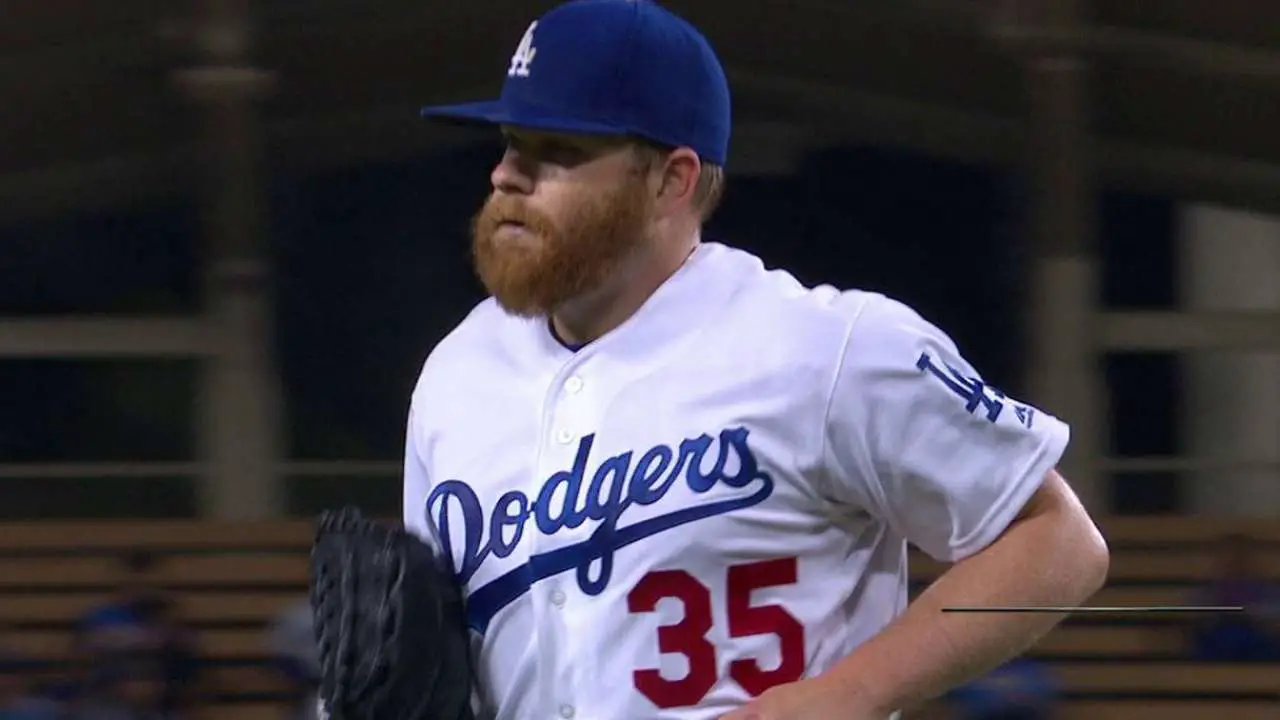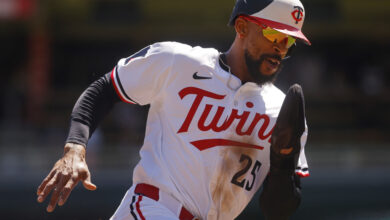
A Few Looks at the Sick Movement Ground-Ball Machine Brett Anderson Brings to the Cubs
The Cubs continued their quest to load up on pitching when they added Brett Anderson, a lefty with a diverse basket of pitches, Monday night. They chose Anderson over other options that included Kris Medlen, Jason Hammel, Travis Wood, and Jake Peavy, all of whom fall short of Anderson’s 2017 Steamer projection of 2.8 WAR (though that’s scaled to an unrealistic 200 innings).
While Anderson’s role with the Cubs is to be decided, he could be part of a periodic six-man rotation that includes Mike Montgomery and maybe even Rob Zastryzny. If he does end up starting several games for the Cubs, he has the goods to be successful.
In this post, we’ll look at how Anderson’s pitch movement compares to other MLB starters and pinpoint his most successful pitches based on whiff rate. Before we do so, let’s take a look at what pitches he throws.
As you can see, the veteran southpaw throws mostly fourseamers and sinkers, finishing batters off with his slider and the occasional curve or change
Movement
We see above that Anderson has several pitches with much more movement than his peers. Of note, his slider and curve have more cutting action than 99.78% and 85.54% of left-handed pitches, respectively.
That’s all well and good, but what does that movement actually look like? I’m glad you asked.
Curve
Slider
Not bad, huh? Even better, only 4.75% of lefty fourseams were thrown with more sinking action, and only 11.83% of sinkers were heavier. No wonder Anderson has the second-highest ground ball rate (58.2%) in MLB* since 2009.
Swinging Strike Rate
Though Anderson has several pitches that spin like a washing machine, he doesn’t generate many whiffs. Only one of his five pitches — the sinker — draws more whiffs than league average (87.02% > MLB LH SP).
Sinker
Projections
Anderson makes a living by forcing weak contact, which results in a lot of grounders. Even though his FIP in 2015 (his most recent healthy season) was 3.94 and is projected to be 3.99 in 2017, the statistic naturally ignores the defensive prowess of the team behind him (which is contextually justifiable). But defense is a reality, one that Cubs fans have witnessed firsthand. By the more batted-ball-inclusive independent pitching statistic, SIERA, Anderson’s 3.51 in 2015 is more indicative of his overall performance.
But even SIERA doesn’t account for Jason Heyward, Javier Baez, and Addison Russell flying towards batted balls. I can already see the latter pair vacuuming up the middle of the infield behind Anderson. He has a terrific chance to be really successful in front of the league’s best defense.
All that said, Anderson’s value is directly tied to his health. A flurry of shoulder, back, elbow, and foot issues have limited the 28-year-old to only 65 games (6, 16, 8, 31, 4) over the last five seasons combined. That is why he reportedly signed a $3.5 million deal (that could grow to $10M with incentives) after making $15.8 million just one season ago. If he does stay healthy, he has a chance to be one heck of a bargain.
Signing Anderson might not even preclude the front office from signing another pitcher, like Wood or Hammel, this offseason. All things considered, this deal is a no-brainer for the Cubs. There’s no long-term risk and even paying out the bonuses in their entirety doesn’t amount to a large sum by today’s standards. Besides, that would mean the guy pitched well.
*Active pitchers, min. 400 IP; Dallas Keuchel – 59.0%







